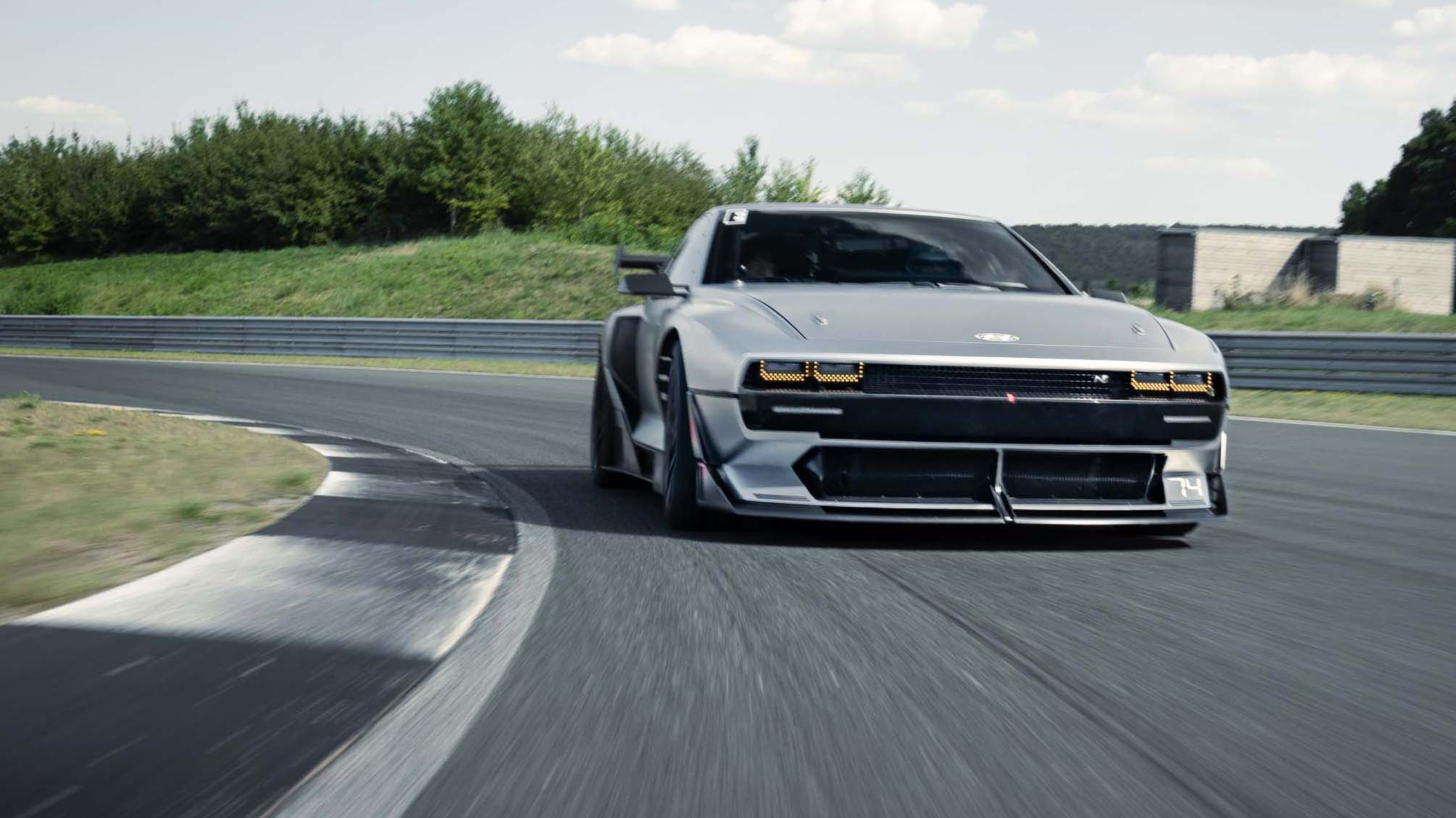Score breakdown
Things we like
- Terrific design
- Impressive performance
- Technical ingenuity
Not so much
- It’s heavy
- It won’t be cheap
- Hydrogen refuelling infrastructure is under-developed
At first glance, the Hyundai N Vision 74 is pure motor show whimsy, a design exercise that celebrates a Hyundai that was never built, the 1974 Hyundai Pony Coupe concept designed by the legendary Giorgetto Giugiaro.
But it’s much more than that. The driveable, fully functional N Vision 74 signposts the company’s thinking on the future of the high-performance car in a post-internal combustion engine world.
What’s more, Hyundai says the N Vision 74 is entirely production feasible.
Visually, the N Vision 74 is a passion project of Hyundai design chief Sang Yup Lee, who has spent most of his professional career working outside Korea for non-Korean car-makers.
“I’ve sketched N Vision 74 ideas for years,” says the man who at one stage worked in Australia on the design of the 2010 Chevy Camaro.
“I was even sketching them on the plane to Korea, on my way to start at Hyundai. I wanted to create a car that celebrated Hyundai’s roots.”
The driveable, fully functional N Vision 74 signposts the company’s thinking on the future of the high-performance car in a post-internal combustion engine world.

Turning those sketches into a three-dimensional reality involved Hyundai’s N brand management and motorsport division, the in-house hot shop set up by former BMW M boss, Albert Biermann.
For N, now run by former Mercedes-Benz executive Till Wartenberg, the N Vision 74 idea became part of its ‘Rolling Lab’ program, where fully functional prototypes are engineered and built to test and evaluate performance-enhancing ideas and technologies.
The e-LSD and eight-speed dual-clutch transmission fitted to N-branded Hyundais such as the Kona N and i30N are products of the Rolling Labs program.
The RN22e electric car is another Rolling Labs project, learnings from which will be applied to the Ioniq 6 EV race car Hyundai plans to run in the 2023 eTouring Car World Cup in Europe, and to the road-going Ioniq 5 N, Hyundai’s first performance EV, scheduled for launch next year.
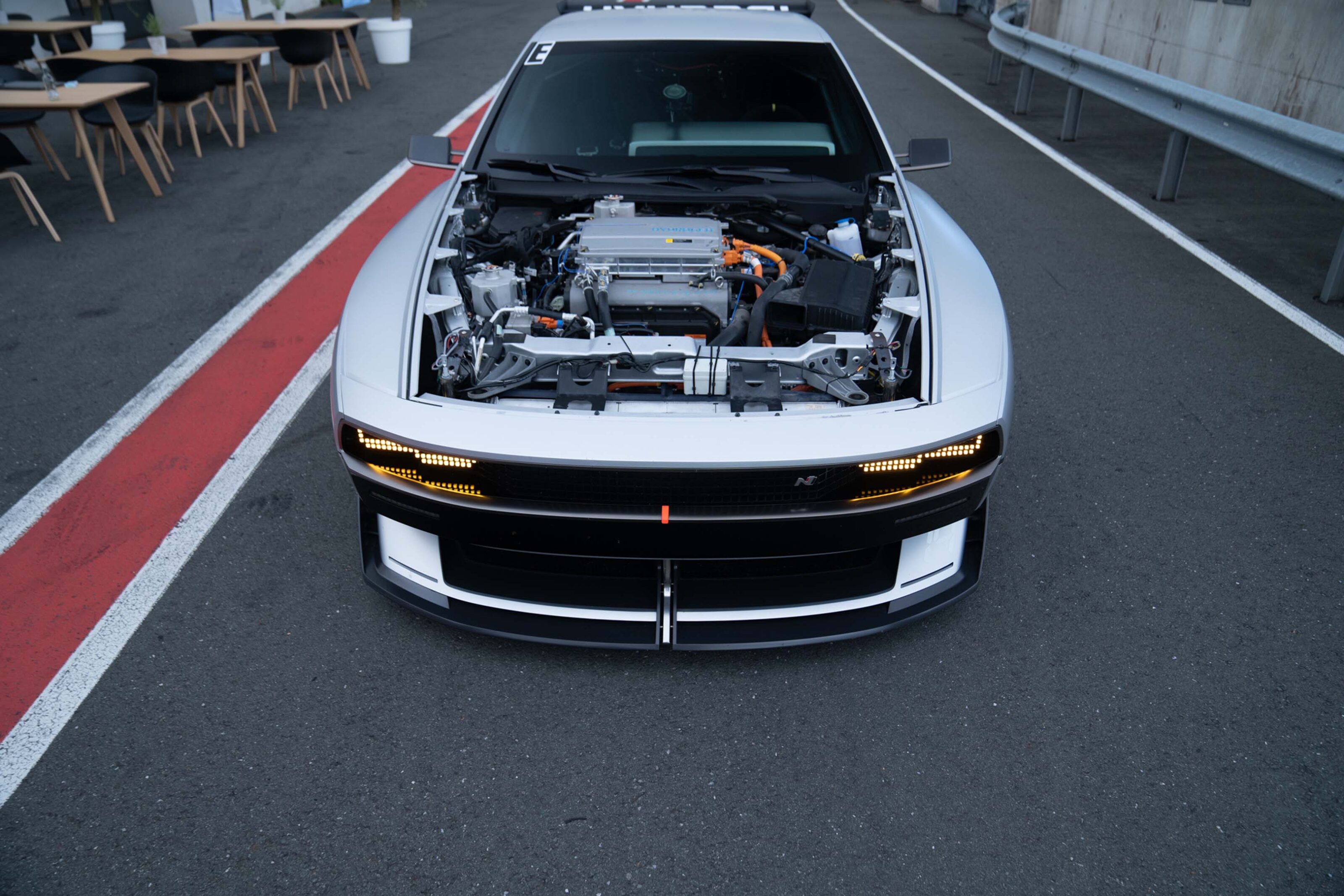
The N Vision 74 combines hydrogen fuel cell technology with battery electric vehicle technology in what Hyundai calls a hydrogen electric hybrid powertrain that produces 500kW and 900Nm.
It sounds almost like Star Wars stuff. But much of what makes up the N Vision 74’s powertrain is derived from technologies found in existing Hyundai production cars.
The 85kW (net) fuel cell stack under the bonnet, for example, is from the Hyundai Nexo SUV, which launched in Korea in 2018 and has been available for special order in Australia since early 2021. The two 2.1kg hydrogen pressure tanks under the N Vision 74’s hatch are also sourced from the Nexo.
Hyundai’s Ioniq 5 donates the battery electric part of the powertrain, including the 800V architecture that enables fast charging of the N Vision 74’s T-shaped 62.4kWh battery pack. The rear-mounted e-motors – one powering each rear wheel – have been developed in-house at Hyundai and are closely related to the motors that will power the high-performance Ioniq 5 N when it hits the streets in 2023.

In city driving or highway cruising, the fuel cell stack provides all the electricity needed to power the two e-motors. On the track, under high load and high demand conditions, the battery pack provides the bulk of the power to drive the wheels.
The trick to making the powertrain work, according to Hyundai engineers, has been to figure out how to balance the output demand between the fuel cell stack and the battery pack, as well as the charge flows.
When it’s not being used to help deliver maximum performance, the fuel cell stack can be used to replenish the battery’s state of charge, for example.
Keeping everything cool was another challenge: Three independent cooling systems look after battery, fuel cell and e-motor temperatures.
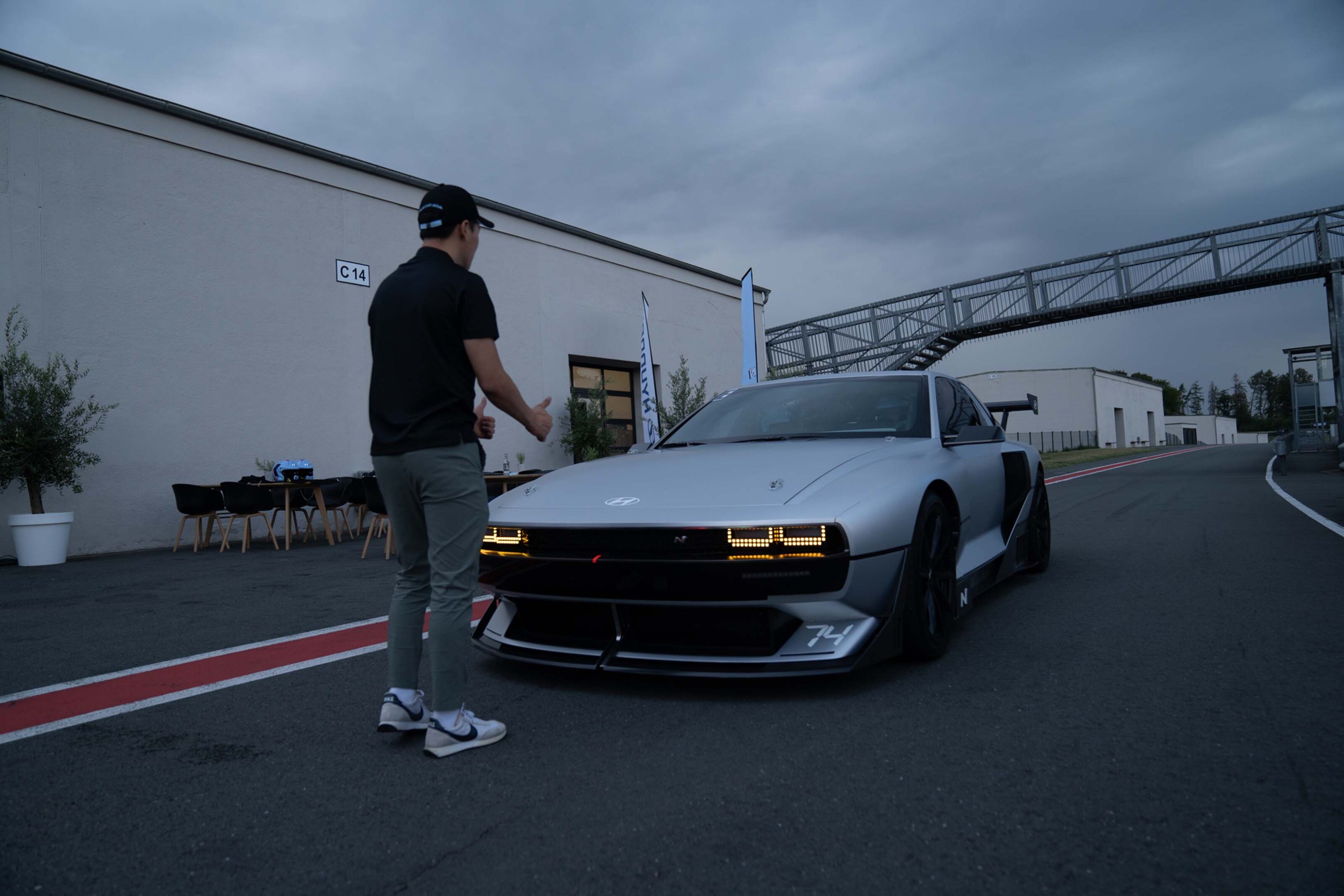
The N Vision 74 blew up the internet when pictures first appeared earlier this year, its Tokyo-Drift-meets-’80s-box-guard-flares vibe a revelation for a generation of young enthusiasts who have grown up with stubby-nosed hot hatches and mid-engine supercars.
It looks even better in real life; retro-inspired but thoroughly modern in terms of its execution, with superb proportions, stance and detailing.
Inside is a full roll cage and wing-backed racing seats, plus pseudo-suede on the dash, centre console and steering wheel. A large silver binnacle houses the digital instrument panel and cooling vents and is anchored to the centre console via a buttress with a full complement of HVAC controls.
The N Vision 74 blew up the internet when when it appeared, its Tokyo-Drift-meets-’80s-box-guard-flares vibe a revelation for a generation of young enthusiasts who have grown up with stubby-nosed hot hatches and mid-engine supercars.
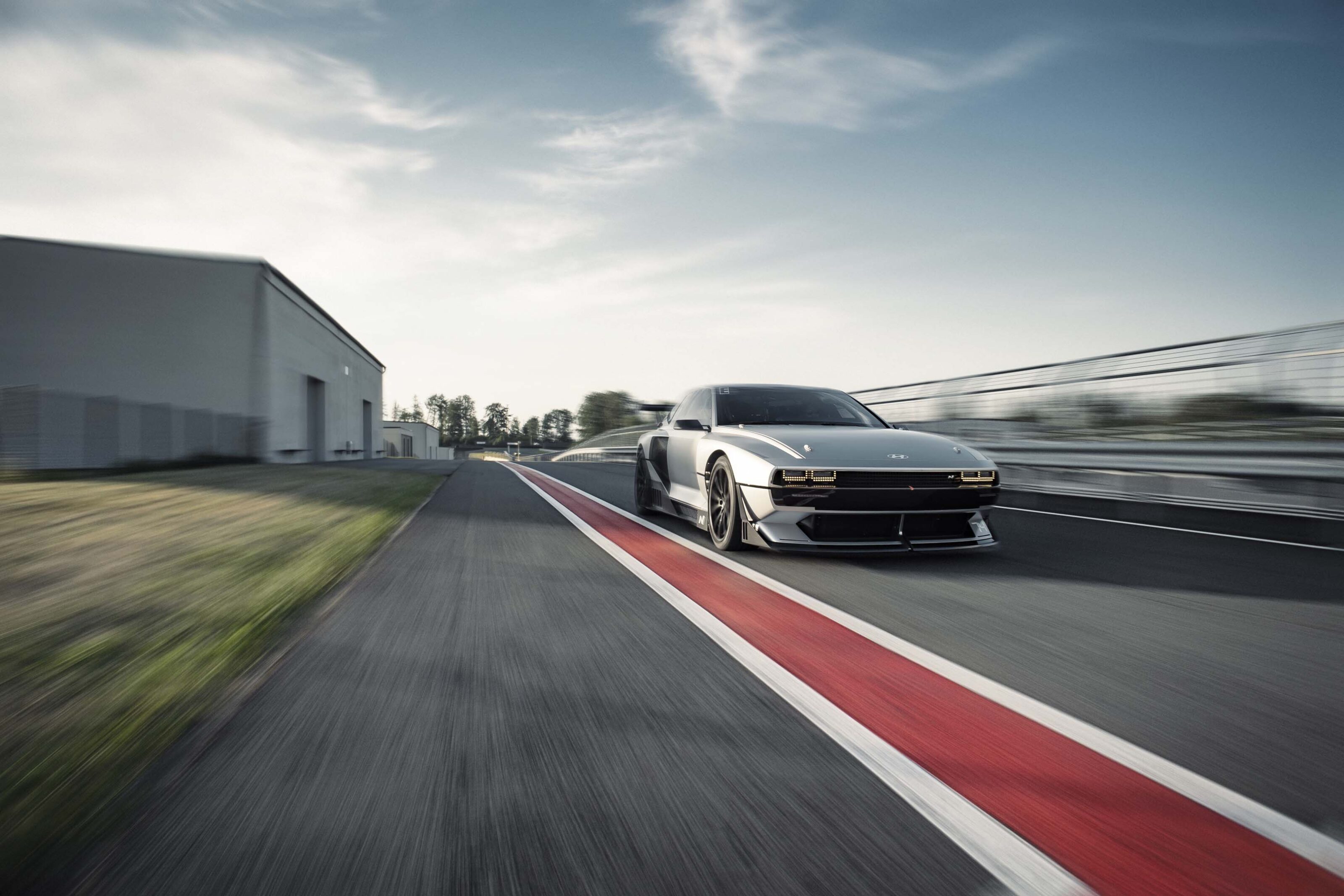
The rotary gear selector and the cluster with the parking button, drive control knob and stability control off/on switch is straight out of the Hyundai Motor Group parts bin, as are the indicator and wiper stalks.
On the instrument panel are graphics showing the total power from the e-motors, as well as the torque deployed individually by each motor. Others show the percentage of power coming from the battery and the fuel cell, battery state of charge and the amount of hydrogen in the pair of pressurised tanks under the rear hatch.
Whether it’s the fuel cell or the battery supplying the electrons, the N Vision 74 is an electric-powered vehicle, and that’s how it drives, with the trademark instant-on torque and linear surge of thrust.

There are two drive modes: Normal and Track. Track mode activates the simulated e-diff functionality, achieved by varying the torque each motor sends to the wheel it is driving.
In track mode, the N Vision 74 punches hard out of corners and feels very much like a car driven from the rear end, its traction enhanced by the 40:60 front to rear weight distribution.
Weighing a claimed 2473kg, the N Vision 74 is no featherweight but disguises its mass well, feeling planted and responsive on the way into corners. The low centre of gravity helps and you can load the front axle under braking to improve turn-in, then go to power early to get the car to rotate.
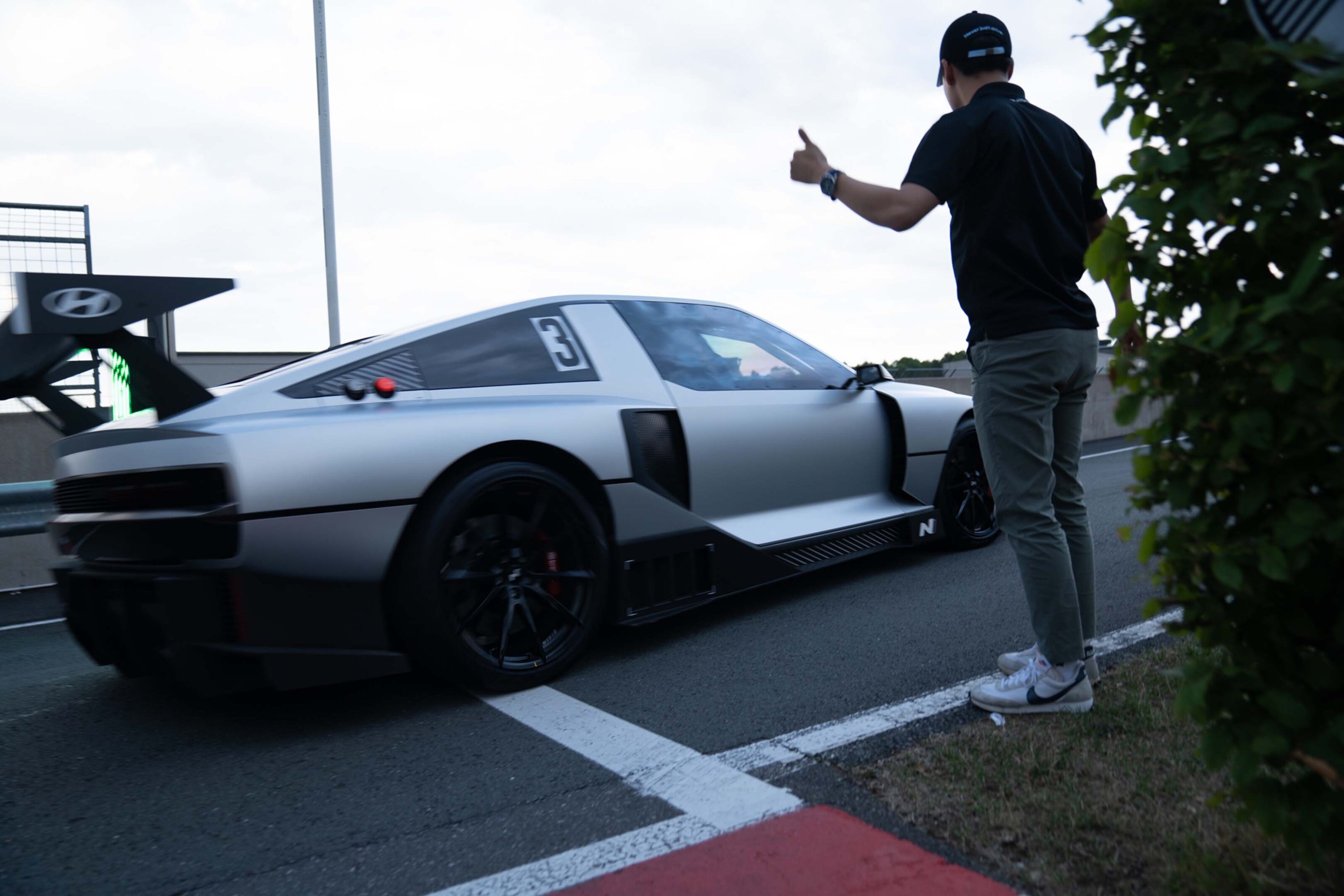
There was, initially, a strange pause then a sudden pop of power when accelerating out of corners, but this turned out to be an artefact of left-foot braking – the power cut-out switch would not allow acceleration while simultaneously coming off the brake pedal. That’s an easy software fix, N engineers said afterwards.
Less easily explained was the occasional odd corkscrewing motion from the rear at speed on the straights.
It felt as if the torque outputs from the rear motors weren’t quite in sync, as if neither e-motor could figure out precisely which wheel could use the most twist action and when.
The Pirelli P Zero tyres – 270/35 ZR20s up front and 315/30 ZR21s at the rear – were brand new and a little green and greasy, perhaps amplifying the sensation. But the engineers took note, and, again, the fix is probably in the software.
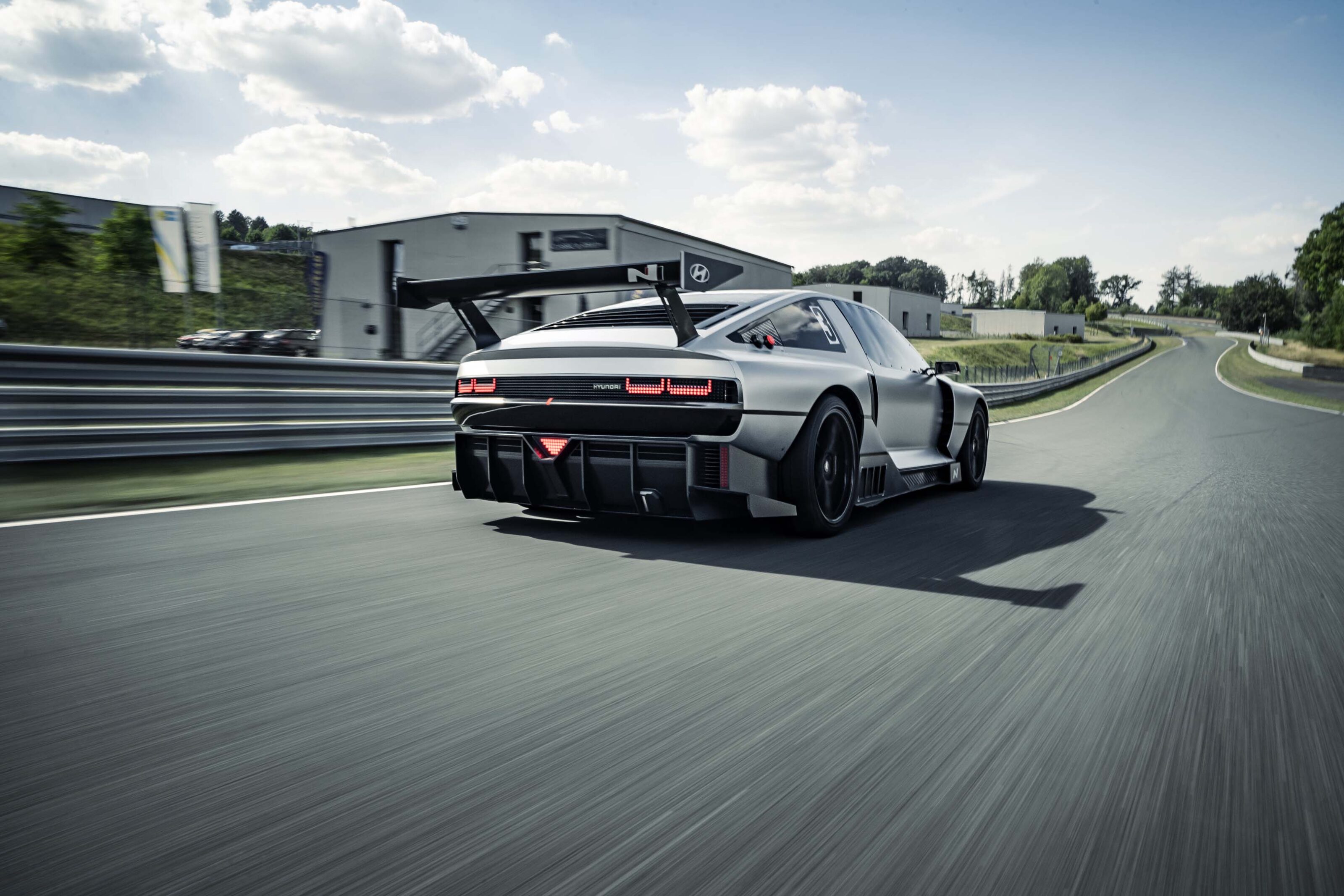
Hyundai claims the N Vision 74 will sprint to 100km/h in under 4.0 seconds, en route to a top speed of more than 250km/h. It feels every bit that fast.
The passionate and enthusiastic group at Hyundai’s N division are adamant that a production version of the N Vision 74 is entirely doable. When asked whether Hyundai would build an N Vision 74 for a 30-something tech billionaire with money to burn, the response from N division boss Till Wartenberg was blunt: “Why not?”.
“But,” Wartenberg added, “I wouldn’t do it for that one person because we have to stay true to our N brand. And that means building an everyday sportscar that’s accessible and affordable. We want to put high performance on the road and make it very close to our enthusiasts.
“He can have the first one. That would be my answer to him.”
N Vision 74 boosters have been carefully laying the foundations of a business case to put the car into production. This not only includes using as much existing Hyundai technology and hardware as possible – parts of the structure underneath the N Vision 74’s sharp skin are from the Genesis G70 sedan – but also the idea that the car would be one of a family of brand halo models.
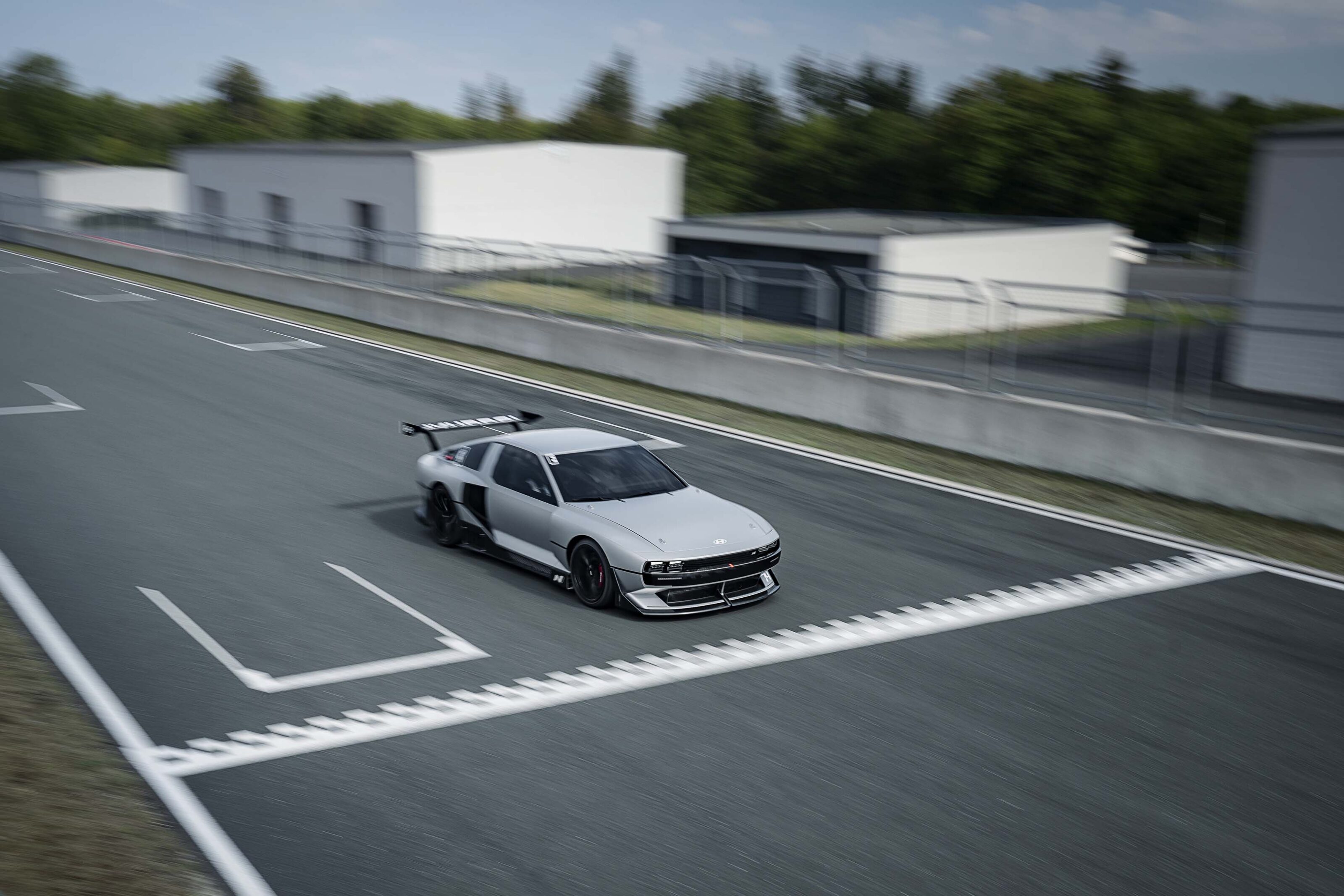
The N Vision 74 has the same wheelbase as the stunning Genesis X Speedium coupe concept, say N engineers with a smile that leaves you to draw your own conclusions.
So, will Hyundai build a production version of the N Vision 74? That’s up to us, the people at N say. There is some nervousness over how much a production version would cost – it wouldn’t be cheap, even with Hyundai’s impressive ability to keep a lid on costs, and the fact that key components and structural elements could be shared with a production version of, say, the Genesis X Speedium and another halo car.
“We would like to make this car as soon as possible,” says N brand management team department head Joonwoo Park.
And he and his colleagues are doing their damnedest to make it happen. But it will only happen if enough of you want it to happen.
So, if you want a production version of the N Vision 74 on your driveway, start pestering your local Hyundai dealer now.
Score breakdown
Things we like
- Terrific design
- Impressive performance
- Technical ingenuity
Not so much
- It’s heavy
- It won’t be cheap
- Hydrogen refuelling infrastructure is under-developed
We recommend
-
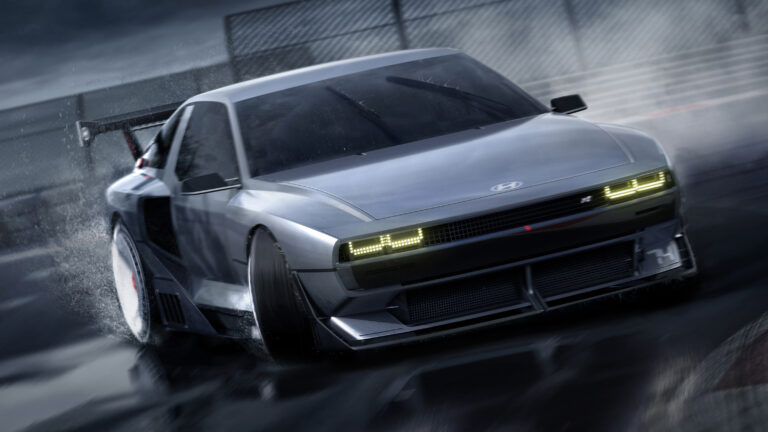 News
NewsHyundai N Vision 74 concept unveiled on N Day
Show-stopping N Vision 74 previews new technology for Hyundai and its most potent car to date
-
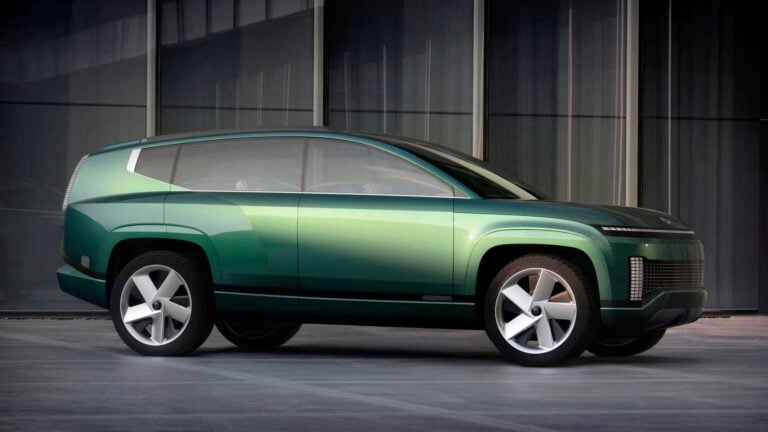 News
News2023 Hyundai Ioniq 9: Electric SUV previewed as concept
Hyundai’s electric SUV has made its debut as a concept
-
 News
NewsNew car calendar 2026: All the new cars coming to Australia next year
Here’s the WhichCar by Wheels guide to all the new cars that will launch in Australia in 2026. Check back in regularly for updates...


